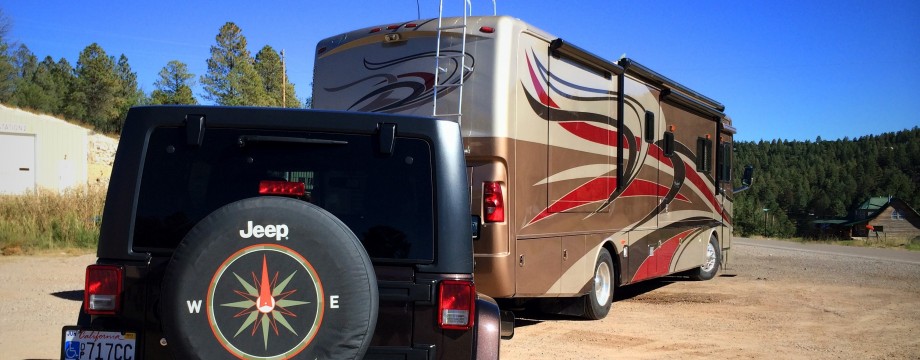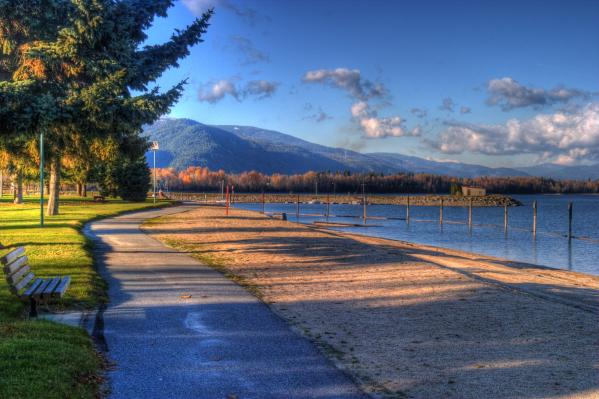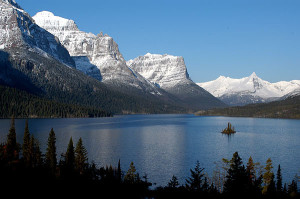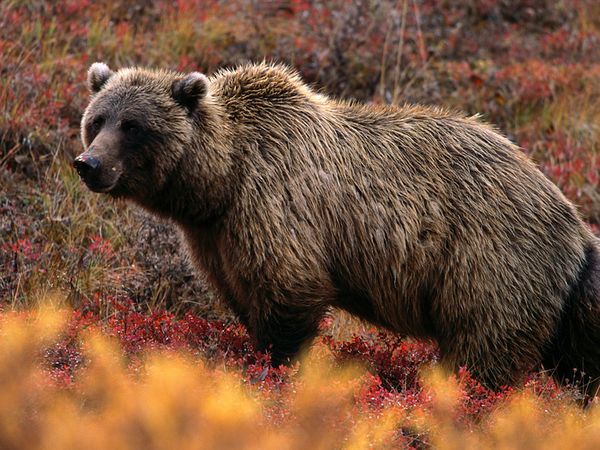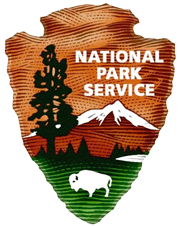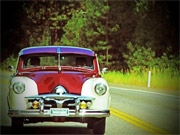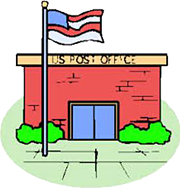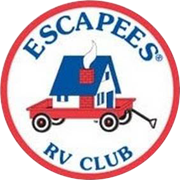SEPTEMBER 13, 2014.
LEAVING SANDPOINT. Today we put Sandpoint in our rear-view mirror and drove about 200 miles northeast to Kalispell, a small town just outside the west entrance to Glacier National Park. We thoroughly enjoyed our time in Sandpoint and in fact we stayed a full three weeks, rather than the three days we’d allotted. We were impressed with Sandpoint’s beauty, and spectacular Lake Pend Oreille. But perhaps most impressive were the townsfolk. Everyone we met was gracious, welcoming and accommodating. There is a sense of community pride that is remarkable. We’ll return…maybe sooner or maybe later, but for sure we’ll return!
GLACIER NATIONAL PARK. It’s huge! This post provides an overview. Specific areas we visit will be posted separately. We’ll probably stay about a week. It would take months to explore the entire park. It’s located in the State of Montana, on the Canada-United States border with the Canadian provinces of Alberta and British Columbia. Established in May of 1910, it encompasses over 1 million acres and includes a large part of the Rocky Mountains, over 130 lakes and hundreds of species of animals, including huge white mountain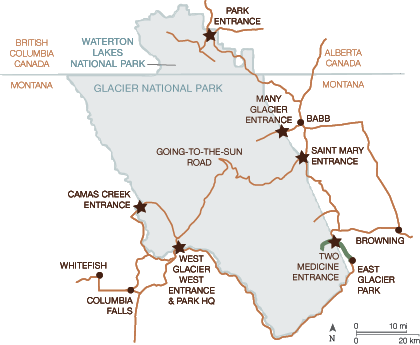 goats, hundreds of Grizzly Bears, Moose, Wolverine and Canadian Lynx. Birds include Bald Eagles, Golden Eagles, Peregrine Falcons, Osprey and many types of hawks. These are truly wild animals…many endangered and protected. Grizzly bear attacks on humans are not uncommon. Some of the finest fly fishing in North America occurs in the streams in the Park. Visiting this park is not like a trip to the Zoo!
goats, hundreds of Grizzly Bears, Moose, Wolverine and Canadian Lynx. Birds include Bald Eagles, Golden Eagles, Peregrine Falcons, Osprey and many types of hawks. These are truly wild animals…many endangered and protected. Grizzly bear attacks on humans are not uncommon. Some of the finest fly fishing in North America occurs in the streams in the Park. Visiting this park is not like a trip to the Zoo!
CRYSTAL CLEAR WATER. The water in the lakes and streams is extremely cold…so cold that plankton can’t live in the water. Accordingly, the lakes and streams are almost crystal clear. The Park is often called the “Crown of the Continent.” It spans the Continental Divide and has more than 7,000 feet in elevation variance. Snowfall can occur at any time of the year, even summer at the higher elevations.
GLACIAL ACTION. The current shapes of the mountain ranges and position and size of the lakes in the Park show the telltale evidence of massive glacial action which carved valleys and moraines which impounded water, creating lakes. Of the 150 glaciers which existed in the park in the mid-19th century, only about 25 active glaciers remain. Scientists studying them have estimated that all the glaciers may disappear by 2020 if the current climate patterns persist.
PARK MANAGEMENT. The Park is managed by the National Park Service. Its mandate is to “preserve and protect the natural and cultural resources, promote and regulate the use of the park and to conserve scenery and the natural and historic objects and wildlife, leaving it unimpaired for the enjoyment of future generations.” Accordingly, hunting is illegal in the park, as are mining, logging and the removal of any natural resources. Oil and gas exploration and extraction are not permitted.
OUR ADVENTURE HERE promises to be one of the highlights of our Journey. We’re in the center of one of the largest and most intact ecosystems in North America. The views from the Continental Divide at Logan Pass (7,000 feet elevation) are breathtaking. Glacier’s one million ares of turquoise alpine lakes, mountain goats and grizzly bears, craggy peaks, we’re told, will leave us speechless. Each mile offers a Kodak moment and each switchback is an adrenaline rush. We’ll see.
HOLD YOUR HAT! HERE WE GO ON OUR VISIT TO GLACIER NATIONAL PARK. There are so many taxidermy shops in the area that I’m absolutely certain the big animals are here to be found. I’m determined to get pictures of some Elk and a Grizzley bear!


